
Hamilton Fish was an American politician who served as the 16th Governor of New York from 1849 to 1850, a United States Senator from New York from 1851 to 1857 and the 26th United States Secretary of State from 1869 to 1877. Fish is recognized as the "pillar" of the presidency of Ulysses S. Grant and considered one of the best U.S. Secretaries of State by scholars, known for his judiciousness and efforts towards reform and diplomatic moderation. Fish settled the controversial Alabama Claims with Great Britain through his development of the concept of international arbitration. Fish kept the United States out of war with Spain over Cuban independence by coolly handling the volatile Virginius Incident. In 1875, Fish initiated the process that would ultimately lead to Hawaiian statehood, by having negotiated a reciprocal trade treaty for the island nation's sugar production. He also organized a peace conference and treaty in Washington D.C. between South American countries and Spain. Fish worked with James Milton Turner, America's first African American consul, to settle the Liberian-Grebo war. President Grant said he trusted Fish the most for political advice.
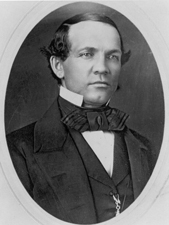
Charles Edward Stuart was a U.S. Representative and U.S. Senator from the state of Michigan.

George Smith Houston was an American Democratic politician who was the 24th Governor of Alabama from 1874 to 1878. He was also a congressman and senator for Alabama.

Daniel Stevens Dickinson was a New York politician, most notable as a United States Senator from 1844 to 1851.

James Gore King was an American businessman and Whig Party politician who represented New Jersey's 5th congressional district in the United States House of Representatives from 1849 to 1851. King was the third son of Rufus King, and brother of John Alsop King, who served as Governor of New York.

Edward McPherson was a Pennsylvania newspaper editor and politician who served two terms in the United States House of Representatives. As a director of the Gettysburg Battlefield Memorial Association, he effected efforts to protect and mark portions of the Gettysburg Battlefield.
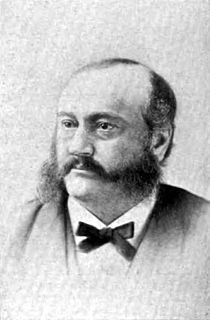
William Dorsheimer was an American lawyer, journalist and politician.
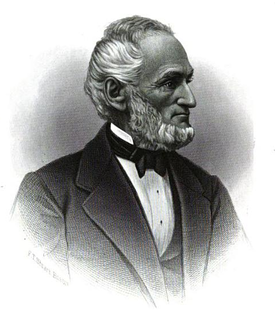
Amasa Walker was an American economist and United States Representative, and the father of Francis Amasa Walker.

David Augustus Boody was an American politician and a United States Representative from New York.

Frederick Augustus Tallmadge was an American lawyer and politician from New York.

William Brown Maclay was a United States Representative from New York. Born in New York City, he received private instruction and was graduated from the College of the City of New York in 1836. He was associate editor of the New York Quarterly Review in 1836, taught Latin, studied law, was admitted to the bar in 1839 and commenced the practice of his profession in New York City. He was a member of the New York State Assembly from 1840 to 1842 and was elected as a Democrat to the Twenty-eighth, Twenty-ninth, and Thirtieth Congresses, holding office from March 4, 1843 to March 3, 1849. He was an unsuccessful candidate for reelection in 1848 to the Thirty-first Congress, and was elected to the Thirty-fifth and Thirty-sixth Congresses, holding office from March 4, 1857 to March 4, 1861. He was not a candidate for reelection in 1860 to the Thirty-seventh Congress, and in 1882 died in New York City. Interment was in Green-Wood Cemetery, Brooklyn.
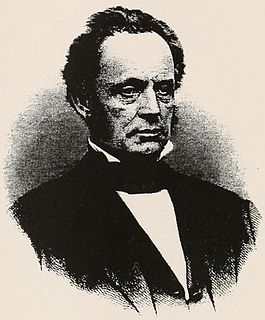
Tappan Wentworth was a U.S. Representative from Massachusetts.

Frederick Whittlesey was a U.S. Representative from New York, cousin of Elisha Whittlesey and Thomas Tucker Whittlesey.

Emery Davis Potter was a U.S. Representative from Ohio.
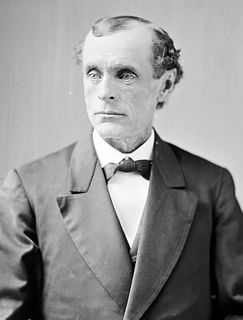
George Washington Cate was a U.S. Representative from Wisconsin.
Experience Estabrook was an American attorney and legal administrator active in territorial Wisconsin and Nebraska.
Halleck, Peachy & Billings was one of the leading early law firms in San Francisco, California and specialized in land cases. The firm was organized by Frederick H. Billings and Archibald Carey Peachy in 1849, who were joined soon after by Henry Wager Halleck. Halleck, Peachy & Billings was employed by claimants in the settlement of titles to Mexican land grants. The firm dissolved in 1861 after Halleck returned to military life and left California.
The 1849 United States Senate election in New York was held on February 6, 1849, by the New York State Legislature to elect a U.S. Senator to represent the State of New York in the United States Senate.

Events from the year 1924 in the United States.























